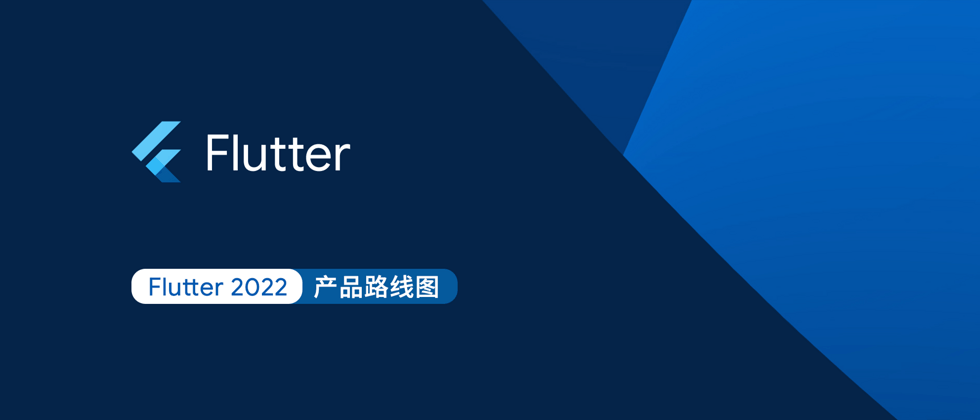To improve product transparency, the Flutter team releases this year's product roadmap at the beginning of each year to help Flutter-using teams and developers plan based on these priorities.
In 2022, the Flutter team will focus on product development and improvement by focusing on the following areas and directions, including developer experience, desktop, web, frameworks and engines, Dart programming language, Caton, and plans to stop 32 this year. Bit iOS device support, and increased investment in software supply chain security to achieve SLSA level 4 (users can have a high degree of confidence that the software has not been tampered with).
Focus
developer experience
As a developer-oriented tool, our primary focus is the developer experience. Our goal is to create an SDK that developers love, and that will manifest itself in many ways. Including creating widgets that implement common business scenarios, clarifying existing APIs and introducing new APIs to implement common design patterns in a more convenient way, improving error message prompts, improving developer tools and IDE plugins, creating new Lint rules, fixes Framework and engine bugs, improving API documentation, creating more useful sample code, implementing Hot Reload on the web and improving stack traces for Dart-to-JS scenarios, etc.
desktop
In 2022 we plan to push Flutter's desktop support to a stable release. We'll focus on testing and announce platforms as they become available - first on Windows, then on Linux, then on macOS. An important part of this work is augmenting the regression test suite so that we can bring Flutter to the desktop platform with full confidence without breaking existing code.
- Track progress on Windows platform: https://github.com/flutter/flutter/projects/209
- Track progress on the Linux platform: https://github.com/flutter/flutter/projects/216
- Track progress on the macOS platform: https://github.com/flutter/flutter/projects/215
Web side
In 2022, we plan to improve Flutter Web's performance, plugin quality, accessibility features, and multi-browser consistent experience, and at the same time, we are also planning to make it easier for Flutter applications to embed other pages.
Framework and Engine
In order to improve the restoration of the Android platform, we will to support Material Design 3 . Also in order to improve the resilience of the web platform, we plan to implement text selection across components, and these updates are not limited to a certain platform.
We plan to improve the text editing experience on different platforms, such as improving the restoration of the desktop text editing protocol, and the integration of gesture recognition on iPadOS.
For desktop and web, we will provide solutions for menus (including context menus and menu bars), including OS-related integrations (especially macOS-related).
Finally, we plan to try to support rendering to multiple windows based on a single Isolate feature, which is inspired by desktop platforms, but can be used beyond desktop platforms.
Dart programming language
In 2022 we plan to slow down and develop Dart programming language features at a steady rate, we expect to introduce a new feature to the Dart programming language, possibly static metaprogramming, and we will program Dart based on this feature Decisions are made on language improvements, as well as improvements to the Dart programming language, including possible improvements to the syntax of package imports.
We also plan to expand the compilation toolchain for the Dart programming language to support compilation to Wasm, although this may depend on when the WasmGC specification is supported.
Caton
2021 we set out to address a lot of issues 161e12d8fe5bc4 , but in the end we may need to completely rethink how we use shaders, which is why we've also been rewriting the backend of graphics rendering. end. In 2022, we plan to migrate Flutter on iOS to this new architecture, and then port this solution to other platforms based on our experience in this area. In addition, we will implement other performance improvements as well as performance introspection features, such as that implemented by new DisplayList system
Plan to deprecate
We plan to drop support for 32-bit iOS devices in 2022, see RFC document .
infrastructure
In 2022 we will increase our investment in supply chain security with the aim of achieving compliance with the requirements described in Infrastructure SLSA Level 4.
In recent years, software supply chain security (Supply Chain Security) has become a topic that is often mentioned. Because of the complexity of software development, there may be many threats in the process of source code, construction, and release. Some malicious people may threaten the security of the application's supply chain by releasing repackaged development tools or packages with similar names, or adding malicious code to some dependent packages.
SLSA (Supply-chain Levels for Software Artifacts) is a security specification framework for the software supply chain. The purpose is to prevent software from being tampered with and improve integrity. Its internal version has been used by Google since 2013, and the v0.1 version will be released in 2021. It was publicly released in mid-September 2019 and is jointly led by a committee composed of Intel, Linux Foundation, VMWare, Google, CNCF and other institutions. SLSA 1 is the most basic requirement level, and SLSA 4 is the highest level requirement. For more information, please visit slsa.dev website.
I hope this 2022 product roadmap can better help you build Flutter applications and take your business to the next level!
Flutter Product Roadmap Original: https://github.com/flutter/flutter/wiki/Roadmap


**粗体** _斜体_ [链接](http://example.com) `代码` - 列表 > 引用。你还可以使用@来通知其他用户。